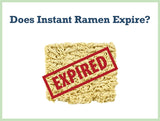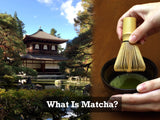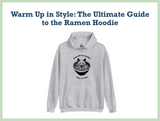

You might think ramen is considered high in calorie and its flavourful broth is also packed with sodium. Right?
There are many good ramen shops around recently, so I understand why you want to know about the calories.
500 to 600 calories.
This is one full bowl of ramen with noodles, toppings and soup.
Want to see how your favourite ramen ranks in terms of calories?

The 4 basic ramen options that almost all Japanese ramen restaurants offer:
Miso ramen: 550 calories
Tonkotsu ramen: 500 calories
Shoyu ramen: 470 calories
Shio ramen: 460 calories
So, after knowing this information, do you still think ramen has a lot of calories?
Calories of ramen is not the problem

As I mentioned, your caloric intake of one bowl of ramen is about 500 to 600 calories.
Since the suggested daily intake of calories should be around 2000 to 2500 calories, and you eat three meals per day, 500 to 600 calories per meal is reasonable.
What about other nutritions?

A potential problem is the balance of nutritions...
Don't worry, I have some suggestions to solve this problem.
Keep reading and you will find out...

Back to what I was saying, there are five major nutrients.
Protein, fats, carbohydrates, vitamins, and minerals.
It is ideal to take in all of these nutritions everyday.
Let's take a look at the nutrients in bowl of ramen...
Protein

There is 10 grams of protein from noodles too.
Protein suggested per meal is around 20 grams.
So, you can get enough protein from ramen.
It is not too little and not too much.
Carbohydrates

Suggested carbohydrates per meal is 75 to 108 grams.
So, one ramen bowl has the ideal amount of carbohydrates.
Fat
It depends on the soup.
Clear broth has about 5 grams of fat and thick soup has about 15 grams.
You can gauge how much oil there is in a bowl by looking at the surface of the soup.
For thick soup, some oil is emulsified in the soup.
There is about 1 to 2 grams of fat from chashu too.
In total there is about 7 to 17 grams of fat in one bowl of ramen.
Considering that the suggested fat per meal is about 14 to 25 grams.
It is not too much.
So, the three major nutrients are fine.
What about the rest of them?

Vitamins

Ramen doesn't have a lot of vegetables.
There are some vegetable such as seaweed, spinach, and green onions, but there is not enough of it in a bowl of ramen.
There are some vitamins from meat and flour...
...And there are some vitamins in the broth (in the form of water-soluble vitamins).
However, ramen contains too little vitamins.
Ramen lacks vitamin A, D, E, and K since they are fat-soluble vitamins. Vitamin C is also lacking since it is easily affected by heat.
Minerals

The biggest problem of ramen is fibers and salt

As I have previously mentioned, there is too little vegetables in a bowl of ramen.
So, that means there is very little fiber. Usually ramen contains only 4 grams of fiber.
But the suggested fiber serving per meal is 8 grams.
As you know, if you don't have enough fiber, it can cause indigestion.
In addition, the sodium content of ramen is a bit high.
You shouldn't take over 2.5 grams of salt per meal.
But if you drink the whole bowl of soup with your ramen, you take in about 10 grams of salt!
That is why you shouldn't drink the whole bowl of ramen soup.
If you stop drinking all the soup, there should be no problem with eating ramen.
As you read, ramen has no problems in terms of protein, carbs, and fat.
But in terms of vitamin, fiber, mineral, and salt, there is room for improvement.
OK, I know what you’re thinking.
How can this problem be fixed...
Right?

Here is some solutions to eat healthier ramen...
1. When you eat ramen, you should eat it with vegetables.
Add a lot of vegetables to your toppings.Vegetables are a great source of fibre and has very little amount of calories.
Here are some of our favourite vegetarian ramen toppings: bean sprouts, green onions, seaweed, and mushroom.
Probably ramen salad is the thing for you.


2. If you couldn't eat vegetables with your ramen, eat vegetables during the next meal.

Example:
If you eat ramen for lunch, then you should eat more vegetables for dinner.

3. Do not eat too much.
I know it is easy to lose track on how much ramen you eat because it is so tasty.But it is difficult to get rid of the food that you have already ingested.
If you eat too much ramen, then you will have high cholesterol and high blood sugar problems.

But if you eat only one bowl of ramen, there should be no problem.
4. Sample the broth, but don’t drink all of it.

The rich broth is very high in sodium content.
Resist the temptation — leave the soup behind.
When you drink a lot of ramen soup, you should get rid of the salt in your body to prevent high blood pressure.
You should drink a lot of...
Water, coffee, tea, and tea.
After reading about ramen calories today, I hope you are not deterred from eating your next bowl of ramen.

Just remember, in order to keep a healthy and balanced lifestyle — everything in moderation.
PS: To remain unbiased in this blog post, I must remind readers to keep everything in moderation. But because I love ramen so much, I personally drink almost all of the broth in my ramen (Shh!)
 PPS: After knowing that you need to eat vegetable with ramen you probably want to try them at home.
PPS: After knowing that you need to eat vegetable with ramen you probably want to try them at home.Do you have large Japanese ramen bowls, spoons, and chopsticks in your kitchen cupboard?
If you don't or you want to get new set, then we have an opportunity you'll appreciate.
Maybe our ramen bowls are for you...
How Many Calories Are in Miso Ramen? Is It Healthy? [Answered]
Calories in Tonkotsu Ramen: Nutrition Facts That Are Impossible to Ignore
Calories in Ramen Broth: 5 Ramen Broth You Must Know About Now
Chashu Ramen Calories: If You Don't Read This Now, You'll Hate Yourself Later
Calories in Shoyu Ramen: Learn This and Be Prepared for Your Next Ramen
About the Author

"I am from Ibaraki, Japan.
Ramen is great! It can bring you a sense of happiness and satisfaction that no other food can. I have been eating ramen for 30 years.
If there is no ramen, my life would be miserable.
Ten years ago, I worked as an office worker. The job was really stressful - excessive working hours, low wages, unpaid overtime work, and constantly being yelled at by my boss.
I was new and alone, no girlfriend, no friends, and felt very lonely.
My only oasis was the ramen shop near the office. For me, the ramen chef there was literally an angel. I saw a halo on his head. (No joke)
Tonkotsu shoyu ramen was my all-time favorite. He made ramen with broth chock-full of umami flavor, nice chewy handmade noodles, and tender chashu.
My greatest dream is connect people with ramen through my blog. I want to share a lot of interesting and funny stories and ramen trivia with you.
Knowing more about ramen can help you appreciate your ramen and make it taste extra delicious."
Did you know that we offer more than just a ramen blog?
We also have an exclusive collection of ramen-inspired t-shirts and hoodies that any true noodle lover will adore.
Head over to ApexRamen and check it out for yourself








Hi Ote,
Thanks for leaving a comment on our article!
If you feel guilty about eating ramen, you might want to check out our blogpost on healthy ramen alternatives:
https://apexsk.com/blogs/japan-lifestyle/how-to-enjoy-your-ramen-healthily
Let us know if you enjoy any of these recipes!
I truly enjoyed reading your post, while at the same time going through a hearty bowl of ramen, minus the guilt (most of it, at least)! Salad for dinner it is!
Hi Asja,
Thank you so much for leaving a comment!
I’m so happy to hear that you’re also a ramen fanatic!
I love ramen during colder months, but I can eat it all season. It seems really hot where you are – do you enjoy eating ramen in the hotter months too?
I’m glad you found my story interesting, I hope you can meet a ramen angel when you try ramen in Japan one day!
I love your little ode to ramen! So well written! Ramen is my favourite, and since I’ve been craving it a lot this month, I was wondering what is in it (aside from heavenly tastiness) that my body is craving? From what you wrote, It turns out it could be salt. It was very hot where I live, and I have been sweating a lot just being outside. Thank you for sharing your ramen story! Especially with your chef with halo above his head! He must have been rAmen angel :P
Hi Christal,
Thank you so much for leaving a comment on my blog!
I’m so happy you found my article useful!
If you’re planning a trip to Japan in the near future, you might want to check out this blogpost about the different types of region-specific ramen in Japan!
https://www.apexsk.com/blogs/japan-lifestyle/title-must-know-35-different-types-of-ramen-flavor-style-explained?pos=6&_sid=16b6c7db0&ss=r
Leave a comment